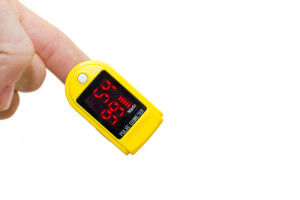Six minute walks are used to monitor pulmonary hypertension patients
The six minute walk is a simple useful test that is performed frequently during screening (looking for signs of PH) and treatment of pulmonary hypertension patients. It is often performed at the first visit to get a baseline of how far the patient can walk. Then, after diagnosis is made via right heart catheterization and treatment is initiated, the test is repeated at follow up visits. The follow up six minute walks allow the physician to see if improvement is being made in exercise capacity. If improvement isn’t being made and the patient cannot walk any farther than prior to treatment, adjustments, such as increasing a dose of medication or adding new medications may be made. The follow up six minute walks are extremely useful as improvement and of course worsening of symptoms may be minor changes every day that the patient does not recognize but can be seen in the snap shot a six minute walk test provides.
What is a six minute walk?
The six minute walk is noninvasive, no poking or prodding, and easy to perform. It is usually done in the pulmonologist’s or cardiologist’s office. It involves a long straight hallway, at least 50 ft in length and ideally 100ft in length. Some centers may mark the walk in meters. A medical assistant or a nurse will ask the patient a few questions prior to beginning the test. A full set of vital signs will be documented including blood pressure, pulse, and oxygen saturation. Instructions for the test should be read to the patient each and every time a walk is performed. Since the walk is often used to help guide therapy it is important that each test is performed in an identical fashion. The same instructions, equipment, and walk course should be used whenever possible. There should be markers at the starting point and at the turnaround point of the walking course. The walk may be performed with the patient on or off of oxygen.
 The patient will wear a pulse oximeter (a small probe worn on the finger to measure pulse and oxygen saturation) during the test. This piece of equipment does not work on all patients and can be unreliable during exercise so it is important not to focus on the numbers during the test. The focus should instead be on walking as far as the patient can in the six minute time frame. The patient should walk at a brisk pace if possible but one that they can maintain for six minutes. There should not be any talking between the patient and the person administering the test except for updates of how much time has passed. If at all possible the patient should walk without assistance from any other person as the assistor may accidentally set the pace. Assistive equipment such as a cane or walker may be used. If the patient cannot continue walking and needs to take a break they may do so. Once the test is started the clock runs for six minutes without stopping. The clock is not paused for breaks.
The patient will wear a pulse oximeter (a small probe worn on the finger to measure pulse and oxygen saturation) during the test. This piece of equipment does not work on all patients and can be unreliable during exercise so it is important not to focus on the numbers during the test. The focus should instead be on walking as far as the patient can in the six minute time frame. The patient should walk at a brisk pace if possible but one that they can maintain for six minutes. There should not be any talking between the patient and the person administering the test except for updates of how much time has passed. If at all possible the patient should walk without assistance from any other person as the assistor may accidentally set the pace. Assistive equipment such as a cane or walker may be used. If the patient cannot continue walking and needs to take a break they may do so. Once the test is started the clock runs for six minutes without stopping. The clock is not paused for breaks.
 The administrator of the walk will keep track of the time that has passed and laps completed. The walker should focus solely on walking as far as they can. At the three minute mark or half way point of the test, the administrator will check the pulse oximeter and document the pulse and oxygen saturation. At the six minute mark the patient will be asked to stop. A series of questions will be asked and vital signs measured. More questions will be asked and vital signs taken two minutes after the walk as well.
The administrator of the walk will keep track of the time that has passed and laps completed. The walker should focus solely on walking as far as they can. At the three minute mark or half way point of the test, the administrator will check the pulse oximeter and document the pulse and oxygen saturation. At the six minute mark the patient will be asked to stop. A series of questions will be asked and vital signs measured. More questions will be asked and vital signs taken two minutes after the walk as well.
The six minute walk may be very difficult to complete for a pulmonary hypertension patient. It is important that a good effort is put into every walk even if 100ft or 2 minutes is all the patient can complete. The walk results are very useful in gauging how effectively the patient is being treated for pulmonary arterial hypertension.
